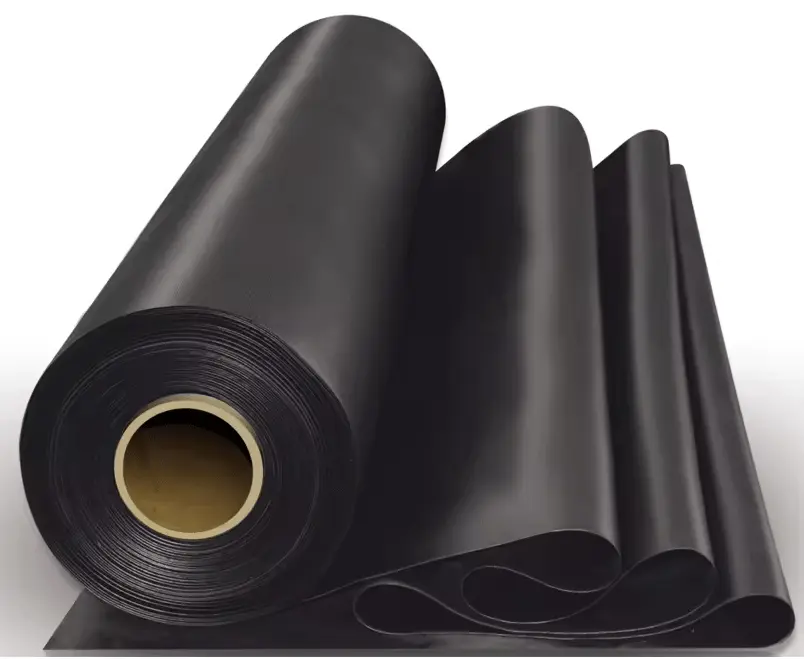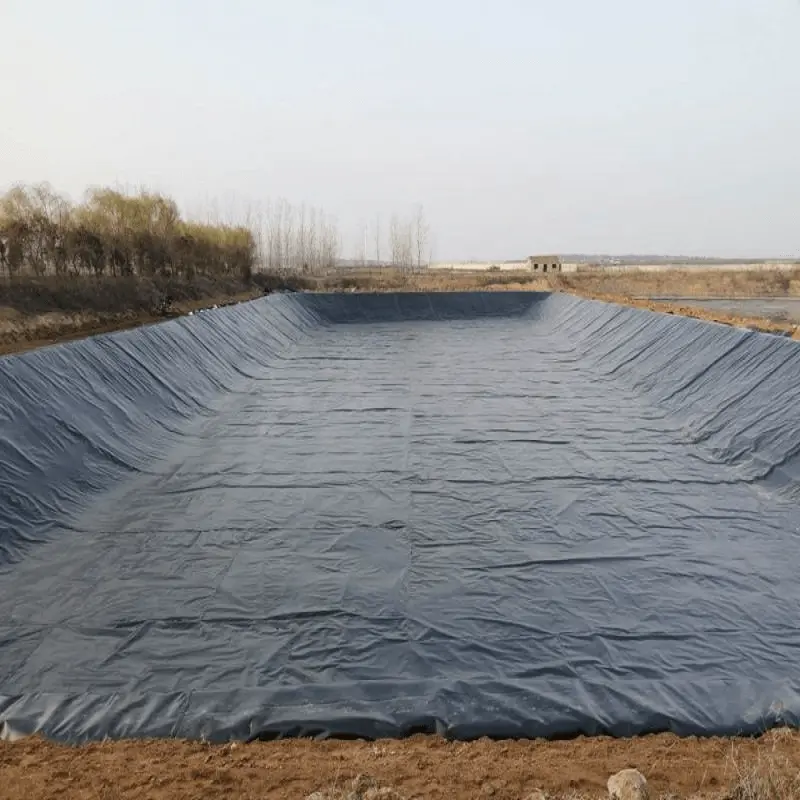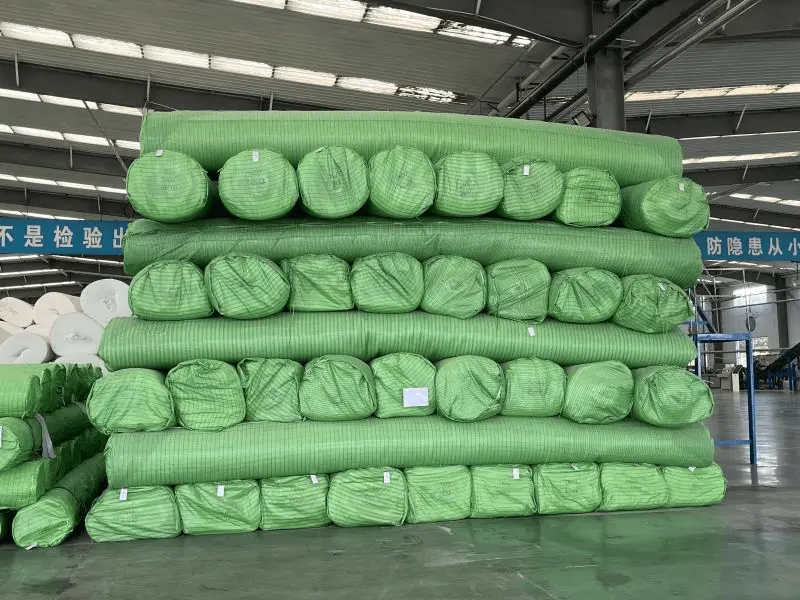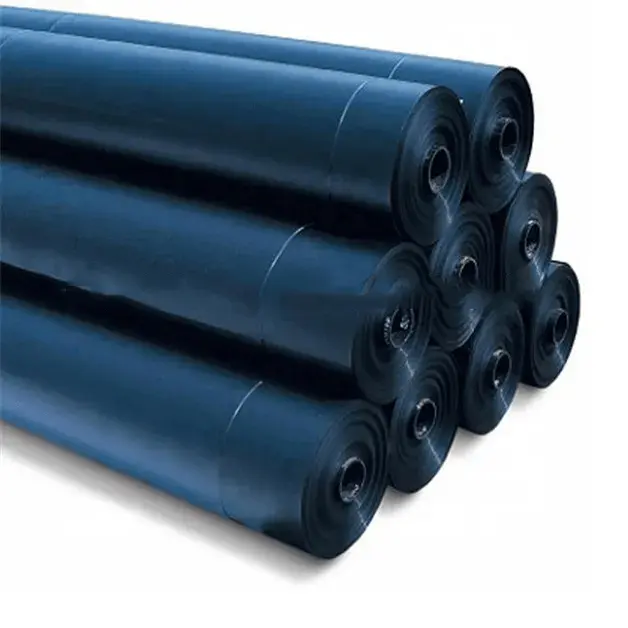
Basic characteristics of geomembranes
Geomembranes are mainly made of plastic film as the anti-seepage substrate, combined with composite materials such as non-woven fabrics. Common plastic film materials include polyvinyl chloride (PVC), polyethylene (PE) and ethylene/vinyl acetate copolymer (EVA). These polymer materials have the characteristics of low specific gravity, strong elongation, corrosion resistance, low temperature resistance and good antifreeze performance. In particular, high-density polyethylene (HDPE) geomembranes have become the most widely used in the market due to their excellent resistance to environmental stress cracking, aging resistance and corrosion resistance.
HDPE geomembranes not only have a high anti-seepage coefficient, but also have excellent heat resistance and cold resistance, and can maintain stable anti-seepage performance in extreme environments from -70℃ to 110℃. At the same time, its chemical stability is excellent, and it can resist the erosion of strong acids, strong alkalis, oils and other chemicals, and is a high-quality anti-corrosion material. In addition, HDPE geomembranes also have high tensile strength, which can meet the needs of high-standard engineering projects.
822108.webp)
Application fields of geomembranes
Environmental protection and sanitation: In environmental protection sites such as landfills, sewage treatment plants, and power plant regulating pools, geomembranes are widely used for anti-seepage treatment, effectively preventing the leakage and diffusion of pollutants and protecting the groundwater and soil environment.
Water conservancy projects: The anti-seepage, plugging, and reinforcement of river, lake, reservoir, and canal dams, as well as the anti-seepage of water channels, are inseparable from geomembranes. Its excellent anti-seepage performance ensures the safe operation of water conservancy facilities.
Agriculture and aquaculture: In the agricultural field, geomembranes are used for the anti-seepage of water conservancy facilities such as reservoirs, drinking water pools, and reservoirs, which improves the utilization efficiency of water resources. At the same time, geomembranes also play an important role in the lining of intensive and factory-based breeding pools and fish ponds and shrimp ponds, ensuring the stability and cleanliness of the breeding environment.
Municipal engineering: In municipal engineering such as subways and underground engineering of buildings, geomembranes are used for waterproofing and anti-seepage, ensuring the durability and safety of the project.
Garden landscape: In garden landscape projects such as artificial lakes, river embankments, and reservoirs, geomembranes are not only used for water seepage prevention, but also play a role in slope protection and beautification of the environment.
Mining projects: In mining projects such as washing pools, heap leaching pools, and ash dumps, geomembranes are used as anti-seepage materials to effectively prevent the leakage and spread of harmful substances.

Construction and maintenance of geomembranes
The construction process of geomembranes needs to strictly follow the design requirements to ensure the anti-seepage effect. Before laying, the base surface needs to be cleaned and leveled, and then laid in the order of slope first and bottom of the field. During the laying process, the membrane surface needs to be kept flat and intact to avoid damage and wrinkles. After laying, welding and laying of protective layers are also required to improve the anti-seepage effect and durability.
In terms of maintenance, geomembranes need to avoid direct sunlight and mechanical damage to avoid reducing their anti-seepage performance. At the same time, regular inspections and maintenance are required to promptly detect and deal with potential problems.

Conclusion
With the advancement of science and technology and the improvement of environmental awareness, the application field of geomembranes will be more extensive. Especially in the field of new energy, such as solar thermal storage systems, the research and development and application of high-temperature resistant geomembranes will become a new hot spot. These new geomembranes not only have higher high-temperature resistance, but also can maintain a stable anti-seepage effect in extreme environments, providing strong support for the development of the new energy industry.
In short, geomembranes, as a multifunctional anti-seepage material, play an important role in modern engineering construction. It is the guardian of anti-seepage in multiple fields. With the continuous advancement of technology and the continuous expansion of application fields, the performance and use of geomembranes will be more perfect and optimized, contributing more to the sustainable development of society.
Haoyang Environmental is proud to offer a comprehensive range of geomembranes, renowned for their exceptional quality and durability. With a strong global presence, our products have garnered immense popularity across numerous countries, earning us a stellar reputation in the industry. Each geomembrane is meticulously crafted to meet the highest standards of performance, ensuring watertight seals and environmental protection in a wide array of applications, from landfills and containment systems to water reservoirs and mining operations. Our commitment to innovation and sustainability has made us a trusted partner for clients worldwide, who rely on our solutions to safeguard their projects and the environment. Through continuous research and development, we strive to enhance our product offerings, staying at the forefront of geomembrane technology and delivering unparalleled value to our customers.
If you are interested in any of our products, fell free to contact Cathy:
Phone/Whatsapp: 0086-19863431716
Email: export2@hygeosynthetics.com
![]() 1.5mm Single-texture HDPE geomembrane.pdf
1.5mm Single-texture HDPE geomembrane.pdf

897.webp)
942.webp)
237.webp)